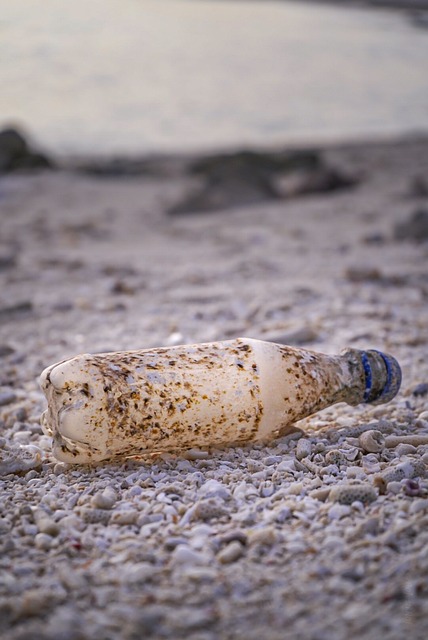
The progress of South Asian Lawyers So Far
July 4, 2024
Commercial Awareness Update – W/C 8th July 2024
July 8, 2024Article by Vinita Prajapati
It’s critical to debunk a few misconceptions about the “Pacific Plastic Island.” Rather than being a single, unbroken island of rubbish, the Great Pacific Garbage Patch is actually a huge area of concentrated plastic waste. We should approach the issue in the ways below.
Trying to Clear Out
Technological Solutions: Organisations like The Water Cleanup are developing inventive ways to collect plastic waste from the water. Their vast ocean systems are designed to concentrate and passively collect waste for easier disposal.
River Interception: Rivers are a significant ocean plastic source.
Initiatives to stop plastic waste from entering the ocean must be started immediately. Preventive measures are crucial.
Reduce Plastic Use: The best approach to dealing with this issue is to prevent plastic from entering the oceans. This means following the same recommendations that were previously covered for reducing plastic use in general.
Better garbage Management: Plastic pollution entering rivers will significantly decrease worldwide with better infrastructure for managing garbage, especially in developing countries.
Consciousness and Law
International Cooperation: This issue affects the entire world. To lessen plastic pollution, international agreements and laws must involve all nations.
Increasing Public Awareness: Spreading knowledge about the effects of plastic trash and methods for decreasing it is essential to long-term solutions.
Increasing Public Awareness: Spreading knowledge about the effects of plastic trash and methods for decreasing it is essential to long-term solutions.
Patience and a diverse approach are needed to remove the Great Pacific Garbage Patch fully. Nevertheless, the aforementioned initiatives promise a healthy future for our oceans. This video shows how big this giant garbage patch is: https://www.youtube.com/watch?v=6HBtl4sHTqU.
However, to prevent this problem from escalating, we still need to make many changes daily in our routine lifestyle.
How to Address the Global Plastic Crisis with Affordable Solutions
While there won’t be an easy solution to the global plastic catastrophe, there are still things you can do to make a difference. This is a two-pronged approach: use less plastic and improve waste management.
- Reduce Your Usage of Plastic
Steer clear of single-use plastics: This is the biggest culprit. Carry reusable bags, water bottles, coffee cups, and silverware with you. Avoid drinking bottled water as it is ineffective and expensive. Invest in a superior tap purifier or filter.
Create a meal plan: Increasing the amount of food you make at home will reduce the amount of commonly purchased meals that come in plastic wrap.
Buy in bulk: Where necessary, it could be more economical to buy larger quantities in less packaging.
Cut Down on Plastic Use: Avoid using single-use plastics, the primary culprits. Carry reusable bags, water bottles, coffee cups, and silverware with you. Avoid drinking bottled water, as it is ineffective and expensive. Invest in a superior tap purifier or filter.
Create a menu: Cooking more food at home reduces the number of commonly purchased meals that come in plastic wrap.
Invest in large quantities: When necessary, buying bigger quantities in less packaging may be more economical.
Promote businesses that employ sustainable practices: Look for companies that reduce their plastic usage or use recyclable materials.
Look for businesses that use less plastic or recyclable materials to support those that adhere to sustainable practices.
- Enhance Waste Management
Appropriate recycling: Verify that you’re sorting materials appropriately and find out which plastics are recyclable in your area by consulting local guidelines.
Promote improved recycling infrastructure: Make your voice heard in support of improved recycling facilities and programs in your community.
Participate in campaigns to clean up: Cleanups of the neighbourhood or the beach are good ways to eliminate plastic waste.
While there won’t be an easy solution to the global plastic catastrophe, there are still things you can do to make a difference. This is a two-pronged approach: use less plastic and improve waste management.
Appropriate recycling: Verify that you’re sorting materials appropriately and find out which plastics are recyclable in your area by consulting local guidelines.
Promote more sophisticated recycling facilities: Motivate your neighbourhood to implement better recycling facilities and programs.
Participate in campaigns to clean up: Cleanups of neighbourhoods or beaches can successfully remove plastic waste from the environment.
Raise Awareness: Talk to friends and family about consuming less plastic. Offer support to organisations tackling the problem of plastic pollution.
Taking these steps may contribute to the global effort to address the plastic issue. Remember that every tiny bit counts! Swapping away carbon-generating products with environmentally friendly substitutes – earthen pots, also known as matkas or clay pots – can be a natural and environmentally beneficial air conditioner substitute, especially in arid climates. See below for how they operate.
The Cool Science
Evaporation’s Benefit: Clay has small pores throughout it due to its porous nature. Water in the pot can seep out of these pores and progressively evaporate into the surrounding air.
Absorption of Heat: Heat is the energy required for evaporation. The clay pot and the surrounding air absorb heat, which has a cooling effect.
Effectiveness: Dry weather is ideal for cooling. The water evaporates from the pot more quickly in dry air, which has a larger cooling effect. Humidity slows down the rate of evaporation, decreasing its cooling effect.
Strategic Placement: If the pot is placed in an area with good ventilation, the cold, damp air in the room will flow easily.
Cooling at Night: If the clay pot is left in water overnight, it will cool down more effectively. The cooler pot will then radiate coolness into the surrounding area throughout the day. This is a video showing the demo of how earthen pots get enough cooling comparable to air-conditioners without any electricity or power consumption: https://www.youtube.com/watch?v=Fu2WYMp1iEs
Reusing Discarded Plastic
Reusing discarded plastic to create interior and outdoor furniture, such as park seats, can improve environmental protection.
Reduces Trash in Landfills: Millions of tons of plastic waste are disposed of in landfills annually. This waste is kept out of landfills, where it could take hundreds of years for it to decompose and could leak hazardous chemicals into the environment by being turned into furniture.
Reduces Ocean Plastic Pollution: Large amounts of plastic debris that harm marine life and ecosystems are found in our oceans. The quantity of plastic waste that can enter streams and harm our oceans decreases when recycled.
Reduces Reliance on Virgin Plastic: Producing new plastic requires significant energy and resources. Reusing recycled plastic instead of virgin plastic reduces the environmental impact of plastic manufacture.
Conserves Resources: Recycled plastic furniture uses less energy and resources to produce than furniture made of traditional materials like wood or metal. This leads to a reduced environmental impact and a reduced carbon footprint.
Strongness and extended life: Recycled plastic furniture, especially park seats for outdoor use, can be remarkably durable and long-lasting. This will further reduce the impact on the environment because less furniture will need to be thrown out and replaced.
Decreased Maintenance: Recycled plastic furniture usually only needs a little maintenance. It requires less frequent staining or varnishing than wood and is less vulnerable to rot, dampness, and insect damage. This implies that fewer treatments and chemicals harmful to the environment will be needed.
Overall Impact: Choosing furniture composed of recycled plastic can contribute to developing a more circular plastic economy. This reduces waste, conserves resources, and improves the preservation of our ecosystem for future generations. This is a video showing the demo of using plastic waste to build furniture: https://www.youtube.com/watch?v=TRqkI5ITPfY. Like this, plastic waste finds several uses in avoiding environmental contamination. Reusing used plastic is a great way to keep plastic out of landfills and the ocean while giving it a second chance at life. Below are some suggestions for making good use of extra plastic.
Frequent Reuse
Containers with several uses: Toss away yoghurt cartons and takeout boxes; store leftovers, organise drawers, or use them for crafts.
Refill and reuse: Refill water bottles and soap dispensers instead of buying new ones on a regular basis.
Use your creativity: You may use plastic bottles to build a variety of items, including planters, bird feeders, doormats, umbrellas, raincoats, handbags, plastic bricks, and plastic houses.
Bring reusable bags: Instead of using single-use plastic bags for grocery and other shopping, use sturdy reusable fabric or canvas bags.
- Greater Scale Reuse
Eco-bricks: Stuff clean, dry, non-recyclable waste into plastic bottles to create dense building blocks. After that, you can construct buildings, plant beds, or furniture out of these eco-bricks.
Construction supplies: Recycled plastic waste can be mixed with lumber or bricks.
3D printing filament: Repurposed plastic can be used to create 3D printer filament, allowing old materials to be recycled into new products.
- Benefits of Reusing Plastic
Decreases trash in landfills: Reducing the quantity of plastic garbage disposed of in landfills may have negative environmental implications.
Preserves materials: Reusing plastic reduces the requirement to extract virgin plastic from raw materials.
Conserves energy: Producing new plastic requires a lot of energy. Reusing plastic reduces this energy use.
Creative expression: Reusing plastic to give outdated products a new lease on life may be amusing and imaginative.
By implementing these suggestions, we can drastically reduce plastic waste and transition to a more circular economy for this material.





